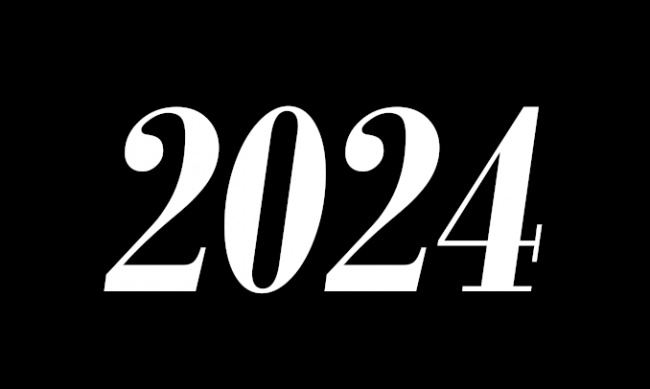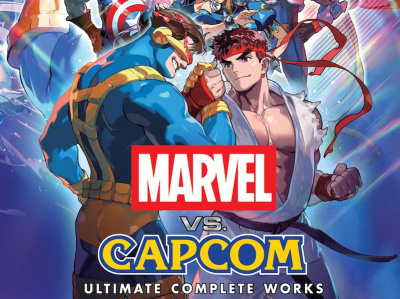OK, it's 2024 and we still don't have our flying cars. This is getting ridiculous! But if the fabulous world of the Jetsons has turned out to be just another broken promise from our childhoods, maybe we can throw a few darts at the calendar from closer range to get a clearer picture what may be in store for the business over the next 366 days.
Collectibles: correction or collapse? 2023 ended on a dour note for the collectors' side of the business. Not only has the market seen some pretty serious reversals of the steep increases in the prices of collectible comics during the pandemic, but there has also been some news disputing the authenticity of certain CGC-graded books that were submitted for "reholdering." CGC has responded with a pledge to track down the perpetrators and make good on losses suffered by customers.
These are two separate stories, but anything that shakes the already shaky confidence of collectors during a downturn just fans the flames. A drop in prices for back issues was overdetermined by the unsustainable run-up during the pandemic, a general economic climate that left less disposable income in the hands of consumers, the specific collapse of NFTs and many crypto-assets whose inflation probably contributed to the silly spending of 2021 and 2022, and the demographics of more core Baby Boom collectors unwinding their collections compared to the number of buyers.
The market seems especially soft for high-grade slabbed books of recent vintage, which have been subject to a lot of pump-and-dump activity on the part of speculators and influencers. This spells bad news for the corner of the publishing industry that caters to collectors of variant covers, especially if those buyers actually learn the lessons of basic supply and demand. Whether this trend, and any questions about the systemic reliability of third-party grading services, represents a useful correction of the excesses of the past few years or a crippling blow to the collectible comics market long term is definitely one to watch.
Consolidation looms. The comics business has defied the principle of economies of scale for so long that one might be forgiven for believing it simply doesn’t apply. As an industry, we appear to like having lots of smaller publishers, independently-owned stores and locally-run conventions and events, and there has been (barely) enough money to keep them viable for decades.
But in 2024, I think we’re going to see the start of some roll-ups at various levels as small and mid-sized players start to realize they are better off hanging together than hanging separately. Every publisher in the Top 10, with the possible exceptions of the wildly prosperous VIZ Media and the single-owner Dynamite Entertainment, seems like a possible candidate for merger and acquisition activity, especially ones where outside investors recently took a big stake or legacy owners are looking for the exits.
It also seems more likely than ever before that consolidation will hit the retail side. The efficiencies here are really compelling, especially as the distribution situation remains complicated. Large, multi-store retailers have more leverage in the market, and can economize on costs with centralized payroll and administration. There are probably more stores and owners these days willing to sell for the right price, or trade the hassles of ownership for greater stability.
Back to basics. 2023 was the year that all the forecasts of the eventual end of "peak geek" media in Hollywood and streaming finally turned out to be correct (take it from me: predict anything for a long enough time and it will eventually come true). Because Hollywood producers are a cowardly and superstitious lot, this likely means options on superhero properties and adjacent genre material is going to cool down for a while longer: bad news for publishers who came to the industry strictly to pilot-test IP destined for other screens.
But… it's good news for those interested in making and selling (and reading) comics as comics. With fewer gimmicks and less stupid money floating around, the winners of 2024 will need to rely on great stories, great art, and strong editorial to keep the trains running on time. People want these stories. They want great art by artists set free to develop their own voices and styles. If the Big Two can’t or won’t deliver, that just leaves more room for the companies that can.
As a side bet, it is likely that great work created through this organic creative process rather than manufactured to be "collectible" will ultimately prove more valuable in the back issue market, especially books that start with small print runs.
The impact of censorship will hurt library sales. Comics, as usual, found themselves in the crosshairs of the culture wars, but in 2023, efforts to ban and censor controversial content were more systematic and more successful. The biggest targets are books aimed at middle grade and young adult readers, and this year expanded beyond perennial punching bags like Gender Queer and Flamer to include Maus, New Kid and even graphic novel adaptations of classics like The Diary of Anne Frank and The Handmaid’s Tale.
Though many of these efforts are legally dubious (we still have a First Amendment in this country, after all), they are making a lot of schools and libraries think twice about whether it is worth the hassle to put these books on the shelves, even if they may eventually prevail over the would-be censors. We even saw Scholastic blink, and then unblink, in the face of potential opposition after announcing then aborting plans to put some controversial work on a more restrictive list for its book fairs.
The climate can't continue to get colder and colder without eventually causing a real chill. And that, of course, is the idea. The problem is, these "controversial" works are getting published because they are what younger readers want to read: stories that reflect the reality of their lives, and authentically represent the most diverse generation in American history.
If libraries and schools back off their commitment to acquiring these books and putting them on shelves and curricula, it will very quickly ripple back up the food chain to the large, consolidated, risk-averse publishers. Too much of the graphic literature for young readers is already cookie-cutter and formulaic. If risk-taking creators get marginalized, it will end up hurting the medium creatively and commercially in the part of the market that has seen the largest growth in the past decade.
2023 scorecard. Last year at this time, I figured 2023 would bring us more and better user-generated content (not really), less and less successful comic-oriented content in other media (yep), better performance from bootstrap startups than from well-capitalized midmarket companies (yes, but with the proviso that some of these startups ended up raising pretty good chunks of money), and the growing impact of AI (still coming, but didn't hit quite as hard as I thought in 2023).
Happy New Year, everyone! Here's to a healthy and prosperous 2024!
The opinions expressed in this column are solely those of the writer, and do not necessarily reflect the views of the editorial staff of ICv2.com.
Rob Salkowitz (@robsalk) is the author of Comic-Con and the Business of Pop Culture and an Eisner Award nominee.

Column by Rob Salkowitz
Posted by Rob Salkowitz on January 3, 2024 @ 4:45 pm CT
MORE COMICS
Marvel Art Books from Three Publishers
July 30, 2025
Three different publishers are offering Marvel-themed art books in coming months.
'Time Before Time' Co-Writers Reunite for New Series
July 30, 2025
McConville and Shalvey, who co-wrote the time-travel mystery Time Before Time, join forces for the next arc of The Terminator.
MORE COLUMNS
Column by Scott Thorne
July 28, 2025
This week, columnist Scott Thorne comments on the Edge of Eternities prerelease and on Magic: The Gathering news from the Hasbro earnings report.
Column by Rob Salkowitz
July 21, 2025
Columnist Rob Salkowitz lays out the Comic-Con panels of interest to industry professionals, current and aspiring creatives, educators, librarians and retailers.








